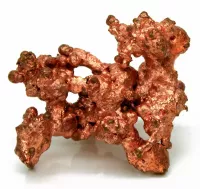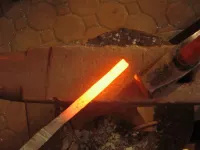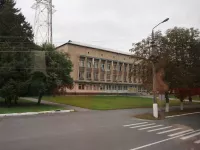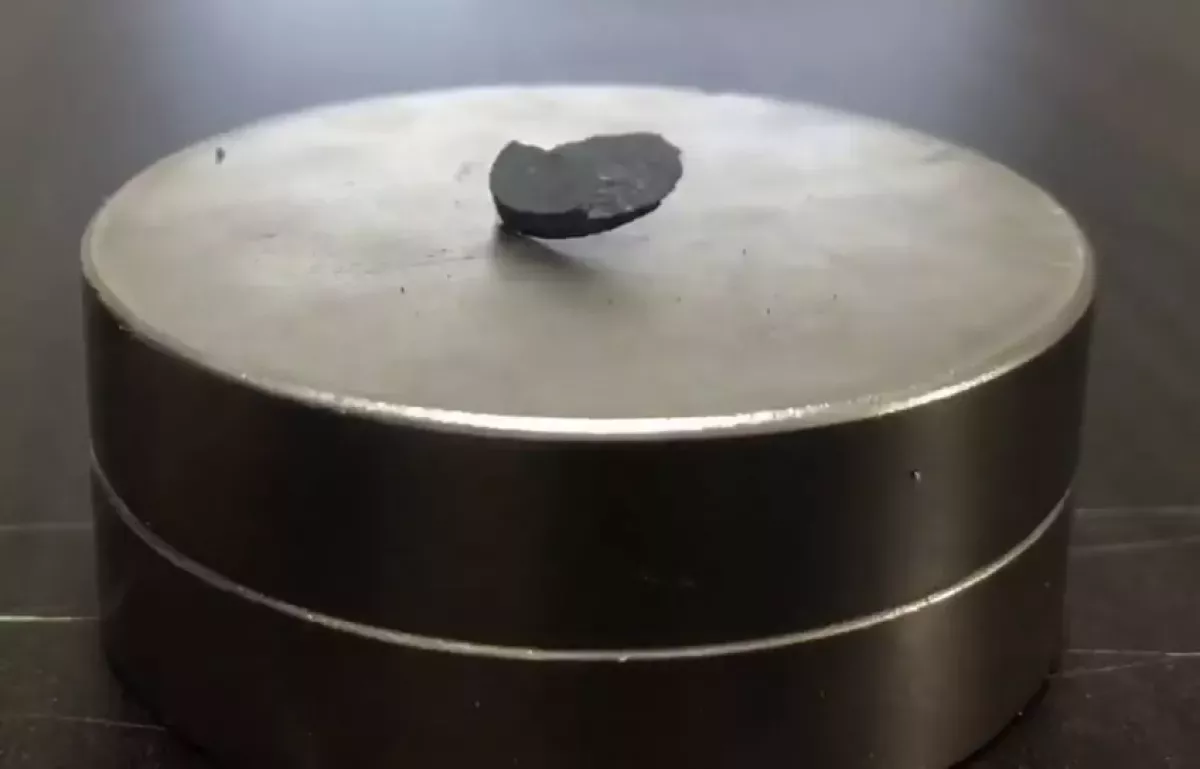LK-99, or PCPOSOS, is a gray-black, polycrystalline compound of copper-doped lead-oxyapatite studied by a Korea University team led by Lee Sukbae and Kim Ji-Hoon since 1999. In July 2023, preprints were published claiming it is a room-temperature superconductor operating up to 400 K at ambient pressure. This claim has sparked significant interest and debate within the scientific community, as room-temperature superconductivity would represent a major breakthrough. However, the initial findings require independent verification and replication to confirm its superconducting properties and potential applications.
1999: Start of LK-99 Research
In 1999, a team from Korea University, led by Lee Sukbae and Kim Ji-Hoon, began studying a gray–black, polycrystalline compound called LK-99, or PCPOSOS, as a potential superconductor.
1999: Origin of the name LK-99
The name LK-99 comes from the initials of discoverers Lee and Kim, and the year of discovery (1999).
2020: First patent application filed
In 2020, Lee and Kim Ji-Hoon filed a patent application for LK-99.
2020: Rejection of Initial Paper by Nature
In 2020, Lee stated that an initial paper on LK-99 was submitted to Nature, but was rejected.
2021: Second patent application filed
In 2021, a second patent application (additionally listing Young-Wan Kwon) was filed for LK-99.
2021: Theory of Superconductivity via Quantum Well
In 2021, it was proposed that partial replacement of Pb ions with smaller Cu ions causes a reduction in volume, creating internal stress and a heterojunction quantum well within LK-99, which was theorized to be superconducting, based on a 2021 paper by Kim Hyun-Tak.
2022: Retraction of Ranga P. Dias's paper
Ranga P. Dias's paper, similarly presented research on room-temperature superconductors, was retracted in 2022 after its data was questioned as having been falsified.
March 2023: Publication of patent applications
In March 2023, the second LK-99 patent application was published on March 3, and a World Intellectual Property Organization (WIPO) patent was also published on March 2.
March 2023: Submission of Korean-language paper
On 31 March 2023, a Korean-language paper, "Consideration for the development of room-temperature ambient-pressure superconductor (LK-99)", was submitted to the Korean Journal of Crystal Growth and Crystal Technology.
April 2023: Trademark application for LK-99
On 4 April 2023, a Korean trademark application for "LK-99" was filed by the Q-Centre.
July 2023: Independent Groups Attempt Reproduction
After the July 2023 publication's release, independent groups reported that they had begun attempting to reproduce the synthesis of LK-99, with initial results expected within weeks.
July 2023: Publication of Preprints Claiming Room-Temperature Superconductivity
In July 2023, Lee Sukbae and Kim Ji-Hoon's team published preprints claiming that LK-99 acts as a room-temperature superconductor at temperatures of up to 400 K (127 °C; 260 °F) at ambient pressure.
July 2023: Publication of two preprints on arXiv
On 22 July 2023, two preprints about LK-99 appeared on arXiv. The first was submitted by Young-Wan Kwon, and the second was submitted only 2 hours later by Kim Hyun-Tak.
July 2023: Kim Hyun-Tak's Statements About First Paper
On 26 July 2023, Kim Hyun-Tak stated in an interview with the New Scientist that the first paper submitted by Kwon contained "many defects" and was submitted without his permission regarding LK-99.
July 2023: Kwon's Presentation and University's Disassociation
On 28 July 2023, Kwon presented the findings on LK-99 at a symposium held at Korea University. That same day, Yonhap News Agency published an article quoting an official from Korea University as saying that Kwon was no longer in contact with the university.
July 2023: DFT Analysis Suggesting Potential Superconductivity
On 31 July 2023, Sinéad Griffin of Lawrence Berkeley National Laboratory analyzed LK-99 with density functional theory (DFT), suggesting that its structure might contribute to superconductivity. However, other researchers suggested this was not compatible with superconductivity.
July 2023: Publication of Replication Attempts
On 31 July 2023, a group led by Kapil Kumar published a preprint on arXiv documenting their replication attempts of LK-99, which confirmed the structure using X-ray crystallography (XRD) but failed to find strong diamagnetism.
Aug 2023: Disproving Superconductivity in Pb9Cu(PO4)6O
On 11 Aug 2023, P. Puphal et al., released their preprint synthesizing the first single crystals of Pb9Cu(PO4)6O finally disproving superconductivity in this chemical stoichiometry published later in APL Materials.
August 2023: Viral Video of Partial Levitation
A video from Huazhong University of Science and Technology uploaded on 1 August 2023 by a postdoctoral researcher on the team of Chang Haixin, apparently showed a micrometre-sized sample of LK-99 partially levitating. This went viral on Chinese social media.
August 2023: Consensus Against Superconductivity of LK-99
By mid-August 2023, the consensus was that LK-99 is not a superconductor at room temperature, and is an insulator in pure form, following replication attempts by many different researchers.
August 2023: Nature Declares LK-99 Not a Superconductor
On 16 August 2023, Nature published an article declaring that LK-99 had been demonstrated to not be a superconductor, but rather an insulator.
August 2023: Establishment of Verification Committee
On 2 August 2023, The Korean Society of Superconductivity and Cryogenics established a verification committee as a response to the controversy and unverified claims of LK-99, in order to arrive at conclusions over these claims. Upon formation, the verification committee did not agree that the arXiv papers by Lee et al. or the publicly available videos at the time supported the claim of LK-99 being a superconductor.
August 2023: LK-99 Verification Committee Request for Sample
On 3 August 2023, a newly-formed Korean LK-99 Verification Committee requested a high-quality sample from the original research team. The team responded that they would only provide the sample once the review process of their APL paper was completed.
August 2023: Kim Hyun-Tak Provides New Video and Claims Diamagnetism
On the same day, Kim Hyun-Tak provided The New York Times with a new video presumably showing a sample of LK-99 displaying strong signs of diamagnetism. On 4 August 2023, he informed SBS News that high-quality samples may exhibit diamagnetism over 5,000 times greater than graphite.
August 2023: Lack of Peer-Reviewed Replications and Alternative Explanations
As of 15 August 2023, no replication attempts of LK-99 had yet been peer-reviewed by a journal. Over 15 notable labs published results that failed to observe any superconductivity, and some demonstrated and replicated alternate causes of the observations in the original papers.
August 2023: Properties of LK-99 Do Not Prove Superconductivity
As of 15 August 2023, the measured properties of LK-99 do not prove that it is a superconductor. A number of studies found that copper(I) sulfide contamination common to the synthesis process could closely replicate the observations that inspired the initial preprints.
October 2023: Lack of Expected High-Temperature Superconductivity Properties
As of 15 October 2023, not one of the properties expected of a high-temperature superconductor had been observed by the original experiment or any replications of LK-99.
2023: Academic publications summarizing initial findings
In 2023, a series of academic publications summarizing initial findings came out, with a total of seven authors across four publications about LK-99.
February 2024: Lack of Peer-Reviewed Replications and Identification of Non-Superconducting Causes
As of 12 February 2024, no replications of LK-99 had gone through the peer review process of a journal. A number of replication attempts identified non-superconducting ferromagnetic and diamagnetic causes for observations that suggested superconductivity, with a prominent cause being a copper sulfide impurity occurring during the proposed synthesis.
Mentioned in this timeline

News encompasses information about current events disseminated through various media...
Korea is a peninsular region in East Asia comprised of...

Copper is a chemical element Cu atomic number known for...

Heat in thermodynamics is defined as energy transferred between a...
Trending
30 minutes ago Carl's Jr. Provides $1 Meals to Federal Workers and SNAP Recipients During Shutdown.

2 hours ago Quentin Tarantino's 'Kill Bill: The Whole Bloody Affair' Arrives in Theaters!

1 hour ago Chernobyl Dogs' Blue Fur Mystery Resolved: Porta-Potty Chemicals, Not Radiation, Were the Cause

2 hours ago Kevin Costner Announces New Western Series 'The West' After Yellowstone Success

25 days ago Zuckerberg spends $1.5B to hire AI expert from Thinking Machines for Meta.
2 hours ago Navy Federal Faces Scam Indictment; Employees Aid Vets with Blanket Donations.
Popular

Nancy Pelosi is a prominent American politician notably serving as...

Zohran Kwame Mamdani is an American politician currently serving as...

William Franklin Graham III commonly known as Franklin Graham is...

Chuck Schumer is the senior United States Senator from New...
Nicholas J Fuentes is a far-right political commentator and activist...

XXXTentacion born Jahseh Dwayne Ricardo Onfroy was a controversial yet...
